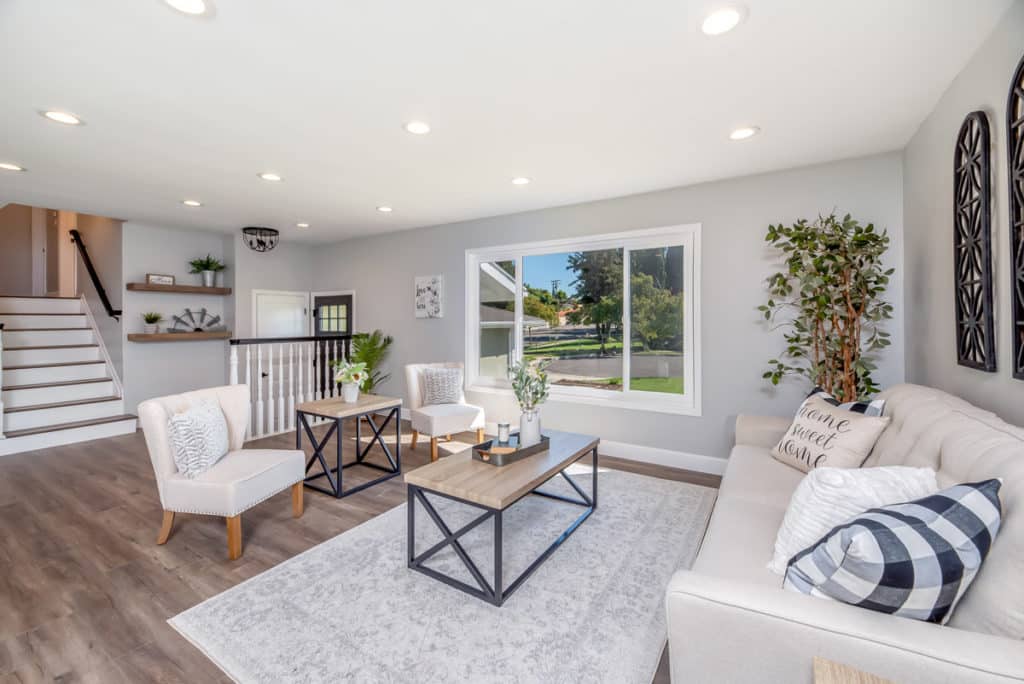If you’re looking to revamp your living room, changing the colour scheme can give your space the breath of fresh air it needs. But, knowing which home colour schemes to choose is crucial, so spend some time weighing up your options before you make any definite decisions. Here’s all you need to know on picking the right colour scheme for your living room!

Be inspired by trends
If you’re unsure where to start when deciding on colour schemes for your living room, take inspiration from colours that you like. Have a look through interior design magazines for ideas, or if you have a favourite piece of artwork or an accessory, pick out colours within that which appeal to you. By getting inspired by home interiors, it can also be a great way to ensure you are up to date with the latest interior design trends to keep your home looking fresh and new.
Utilising colour psychology
Experts often comment on how colours affect behaviours and evoke certain emotions in people, so think about what type of vibe you want to create for your living room. If you want it to be a calming space, colours such as blue, green and pastels are said to be top choices. Warm tones of grey also invoke a calm and secure feel. On the other hand, if you want your living room to be an energising place, then yellow is a good bet, while red also increases energy in a space, so is the ideal colour if you want your living room to be an area where people gather to socialise. As well as using colour psychology to invoke different moods and emotions, choose colours based on your personality – after all, a living room is a space where you’ll spend a lot of time, so it should reflect who you are as a person.
Practical considerations
While personal preference should be the main influencer when deciding on home colour schemes for your living room, it’s also a good idea to take practical aspects into account, such as the room size and how it will be used. For example, if you have a small living room that doesn’t get much natural light, it’s a good idea to choose colours that help to add more light to a room, making it feel bigger and brighter. These include pastels, neutrals and light-toned colours, rather than dark or bold shades. Additionally, if you have pets and children at home, some colour choices could easily show up dirt quickly, so you might want to avoid white and pale shades, and stick to bold, darker colours, instead.
Colour trends in interior design
Colour trends come and go, so if you want to keep your living room top of the style stakes, choose colours that are currently in fashion. Neutrals remain eternally popular- and for good reason. They blend in well with any space, don’t go out of fashion, and mix well with other colours, materials, textures and home fabrics. Even if neutrals are the dominant colour in your living room, you can still add pops of colour for an interesting contrast, such as a feature wall or by adding colourful cushions to a pale-coloured sofa.
Keeping on top of trends: Grey interiors
Grey continues to be a popular choice of colour for interior trendsetters, so consider adding this shade to your living room to make a fashionable statement. Some people are scared to use grey as they think their room will look dull and dreary, but there are different tones of grey that can range from cool to warm. Plus, like with neutrals, you can mix grey with other accent colours to great effect, for example, a grey sofa combined with burnt orange cushions is sure to get visitors to your home swooning. Don’t think you need to just use grey as a plain colour, either. You can liven things up a bit with geometric tailored curtains for instance, or soften the shade when combined with pretty floral patterns.
Nature home interior design
With more people recognising the importance of nature for our wellbeing, the colour green is increasingly being used in our homes to give a nod to the healing power of the great outdoors. All shades of green are currently on-trend right now, from cool, bold tones that evoke a lush, tropical feel, to lighter shades such as sage and olive. Thanks to the exceptional versatility of green, there are lots of ways you can incorporate this colour into a living room, without it feeling overbearing. You could add pops of green, such as with a decorative green doorstop, a green lampshade or just by adding a large, lush houseplant. Experiment with different textures and home fabrics, for example, green velvet can give a room a very opulent feel, while a sage green chenille fabric lends a very contemporary vibe.
Clever combining with colour schemes
When deciding on home colour schemes, stick to a limited palette of colours. Experts claim that three is plenty – any more and your room might look overcrowded with colour. Don’t forget, you can combine colours by picking up small or subtle accents in fabrics and furnishings to tie a look together, and you can even use the same colour by blending different tones, textures and home fabrics, to great effect.

